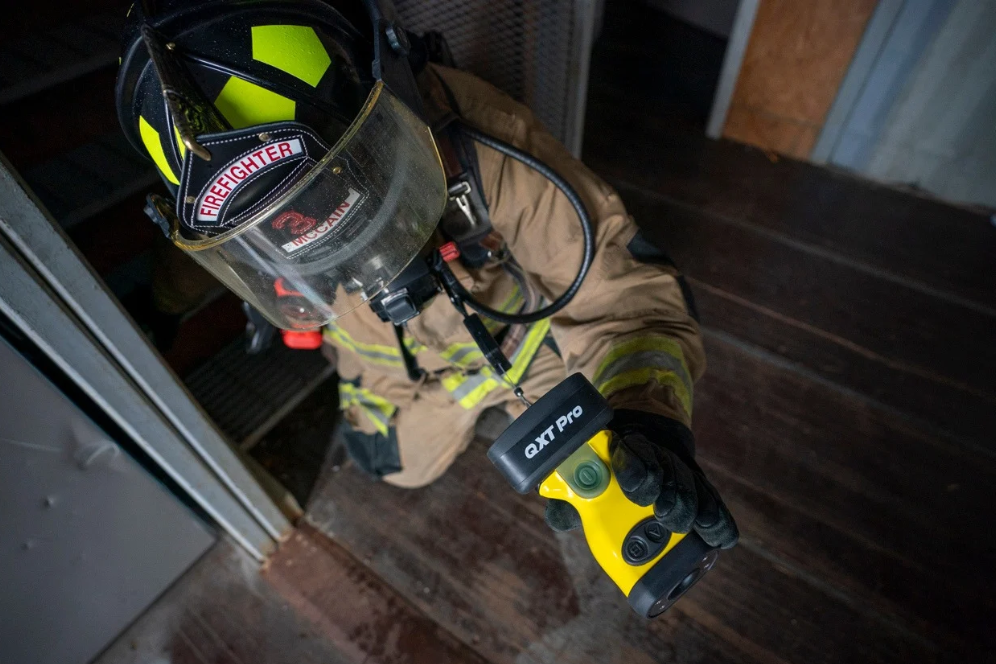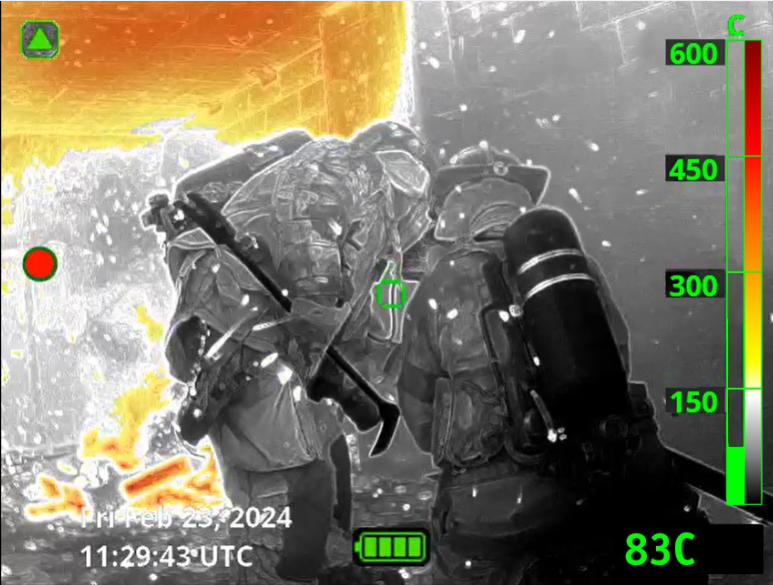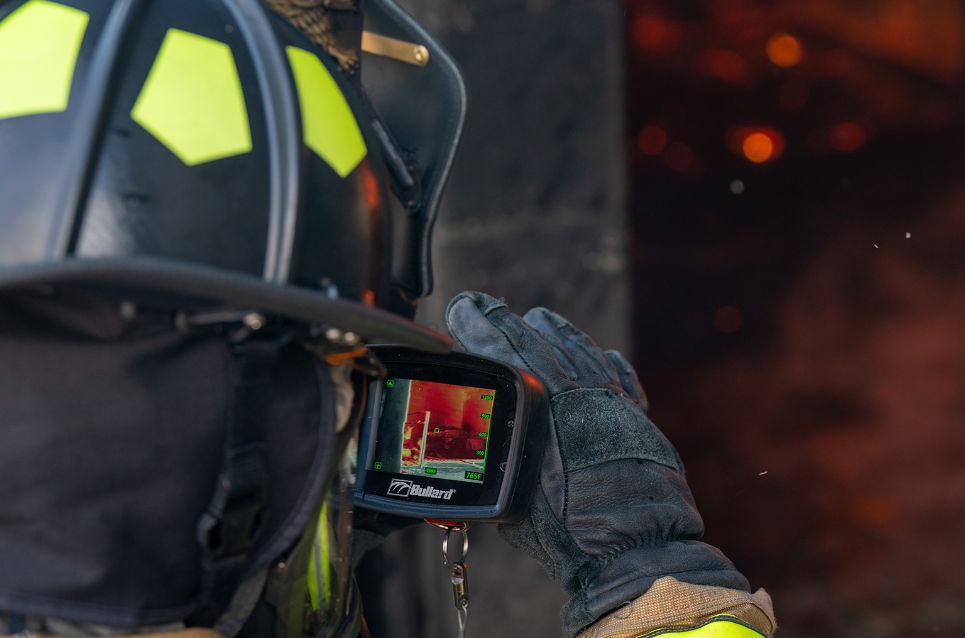A thermal imager can be lifeline for firefighters, but it’s only as reliable as its power source. Selecting the right battery type, charging system, and maintenance practices helps ensure your thermal imager is ready to perform when you need it most. Here, we explore the differences between internal and external batteries, discuss the importance of chargers, and provide actionable tips to help ensure uninterrupted power on the fireground.
Why Batteries Matter
The battery is the heart of your thermal imager, and its performance directly impacts your ability to respond effectively. Key considerations include:
- Battery Life: Determines how long your thermal imager can operate during extended missions.
- Charging Time: Affects how quickly your equipment can return to service after use.
- Durability: Help ensure reliability in harsh environments like high heat, water exposure, or heavy smoke.
- Replacement Process: Impacts downtime and long-term maintenance costs.
Imagine being deep inside a structure fire and seeing your thermal imager battery indicator flash low power. Whether you have a spare battery to swap or need to wait for a recharge could determine whether your team has uninterrupted visibility or critical delays.
Internal vs. External Batteries
Thermal imagers are typically powered by either internal or external lithium-ion batteries. Each type has unique benefits and challenges.
Internal Batteries
- Advantages:
- Sealed designs offer exceptional protection against water, dust, and physical impacts, providing durability in extreme environments.
- Fewer moving parts reduce the risk of damage, enhancing reliability and minimizing maintenance.
- Built-in designs are often optimized for faster charging, allowing quicker turnaround times.
- Considerations:
- Requires docking the entire imager for recharging, which could temporarily remove the unit from service.
- Battery replacement may require professional servicing, potentially leading to downtime during repairs.
External Batteries
- Advantages:
- Swappable design allows for quick replacements during extended operations.
- Carrying spare batteries helps ensure continuous power availability.
- Considerations:
- External compartments can be more vulnerable to water, debris, and physical damage, potentially compromising performance.
- Keeping up with spare batteries and ensuring they are used in rotation and charged can be a hassle.
- Consumable nature means recurring costs for replacement batteries over time.
Real-World Example:
In a high-heat scenario, a sealed internal battery resists damage from water and debris, ensuring a more consistent performance. However, during a long-duration operation, a swappable external battery may provide the flexibility needed for continuous use.

The Importance of Chargers
A reliable charger is as critical as the battery itself. Chargers help ensure consistent power availability while maintaining battery health. Two common options include:
- Apparatus-Mounted Chargers
- Advantages:
- Keep batteries charged during transit, ensuring readiness on arrival.
- Convenient and accessible, particularly for emergency responses.
- Considerations:
- Verify compatibility with your apparatus power system to avoid undercharging or overcharging.
- Conformance to NFPA 1901 standards helps ensure safety during vehicle transit.
- Desktop Chargers
- Advantages:
- Allow for charging multiple batteries simultaneously, ideal for rotating spares.
- Useful for off-shift preparation.
- Considerations:
- Requires designated space in the firehouse and manual rotation of batteries.
Emerging Technology: Wireless charging systems are gaining traction, eliminating physical contact points and reducing wear on components. Wireless systems particularly benefit sealed internal batteries, maintaining their durability while simplifying the charging process.

Cost Comparisons: Long-Term Value
While external batteries offer the flexibility of quick replacements, their consumable nature means recurring expenses for replacements over time. Internal batteries, though requiring professional servicing, often provide greater durability and eliminate the need for frequent replacements.
Estimated Costs:
- External battery replacement: $100–$150 per battery, depending on model and capacity.
- Internal battery replacement: Servicing costs may range from $200–$300 but occur less frequently, offsetting long-term expenses.
Departments must weigh initial convenience against long-term costs when selecting a battery system.

Battery Maintenance and Longevity
No matter the type, lithium-ion batteries require regular care to help ensure consistent performance:
- Daily Checks: Inspect for cracks, swelling, or corrosion. Charge batteries above 50% before each shift.
- Rotation Strategy: Regularly swap batteries to prevent overuse of a single unit.
- Storage: Store batteries in a cool, dry location to prevent premature aging.
- Preventative Replacement: Most lithium-ion batteries last 2–3 years or 300–500 charge cycles. Plan replacements proactively to avoid downtime.
Note: See manufacturer’s recommended maintenance procedures for your specific battery.
Pro Tip: Label batteries with purchase or rotation dates to track lifespan and maintain optimal performance.

Key Takeaways
- Battery Type Matters: Internal batteries offer unmatched durability and reliability in harsh environments, while external batteries provide flexibility for extended operations.
- Charger Selection is Critical: Combine apparatus-mounted chargers for readiness with desktop systems for rotation. Wireless charging offers a secure, maintenance-free alternative. Look for apparatus-mounted changes that conform to NFPA 1901.
- Regular Maintenance is Essential: Proactive battery care extends lifespan and helps ensure your thermal imager is ready for action.
- Long-Term Value: Sealed internal systems can reduce consumable costs and enhance reliability, making them a cost-effective choice over time.
By understanding battery and charger options, implementing a solid maintenance routine, and prioritizing long-term reliability, you can be more confident that your thermal imager remains powered and ready when seconds matter most. A durable, reliable power system is your best ally in maintaining visibility and safety in the challenging environments firefighters face daily.
To view Bullard’s new XT Series thermal imagers and chargers, click here.



